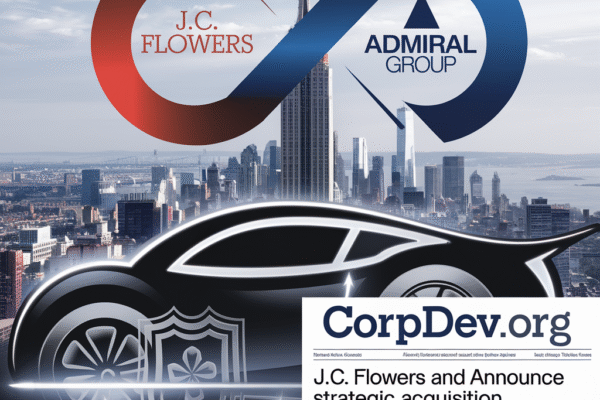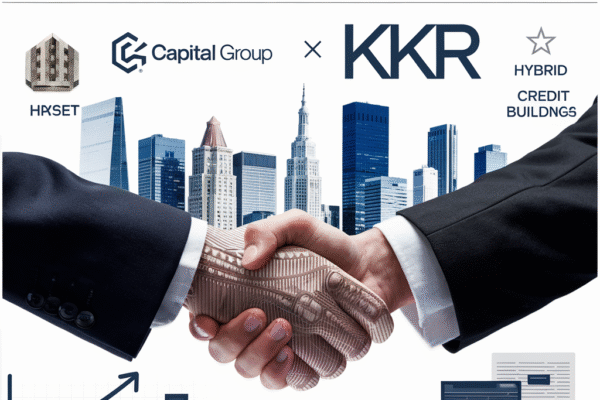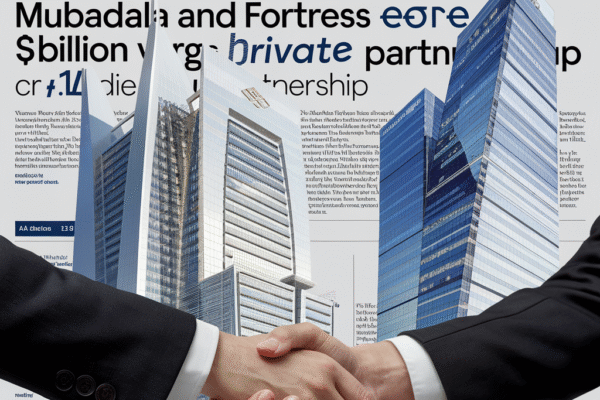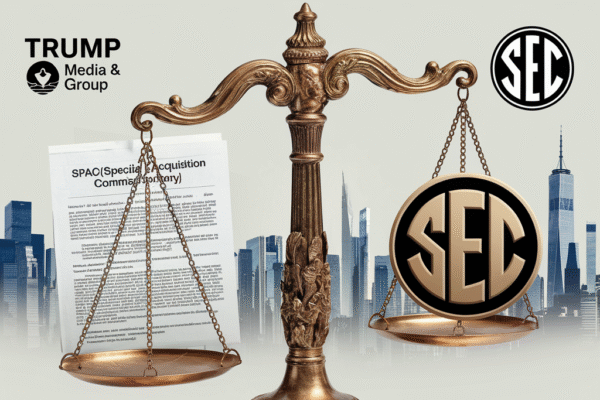As global markets reel from President Trump’s sweeping “Liberation Day” tariffs, an unlikely financial instrument has emerged as a bright spot: Special Purpose Acquisition Companies (SPACs). Despite a 6.54% year-to-date decline in the S&P 500 and an 8.40% drop in the NASDAQ-100[2], the SPAC market raised $3.1 billion across 19 IPOs in Q1 2025 alone[3], with serial sponsors now dominating 80% of new issuances[3]. This resurgence defies expectations, as traditional IPOs remain frozen amid trade policy uncertainty[5][9]. For CEOs navigating this landscape, SPACs offer a rare combination of speed, pricing certainty, and structural flexibility – but only if deployed with disciplined due diligence and sector-specific expertise.
The Resurgence of SPACs in a Volatile Macro Climate
Structural Advantages Over Traditional IPOs
SPACs’ revival stems from their ability to circumvent two critical bottlenecks in conventional public offerings. First, the average SPAC merger timeline of 5-6 months[4] provides crucial agility as companies seek liquidity before potential recessionary pressures materialize[12]. Second, negotiated acquisition prices[4] insulate targets from the valuation erosion plaguing traditional IPOs – particularly vital for early-stage quantum computing firms like Rigetti and IonQ, whose shares surged 142% collectively in 2024[3].
Serial Sponsors Driving Market Maturity
Seasoned SPAC architects now account for $2.7 billion of Q1’s $3.1 billion raised[3], leveraging specialized industry networks to source targets. ICR President Don Duffy notes this shift: “In volatile markets, serial sponsors’ operational expertise becomes a magnet for both investors and quality targets”[3]. This professionalization contrasts sharply with 2021’s SPAC boom, when celebrity-backed vehicles frequently overpaid for unproven technologies[1][13].
Tariff Turmoil’s Dual-Edged Impact
Supply Chain Pressures Create SPAC Opportunities
The 10% universal tariff and targeted 50% rates on 57 nations[16] have accelerated corporate restructuring. Katten’s Kimberly Smith observes: “Middle-market sellers now view SPACs as exit ramps before tariff costs cascade through supply chains”[15]. Recent examples include automotive suppliers using SPAC mergers to fund nearshoring initiatives and quantum computing firms securing public capital for tariff-resistant R&D[3][10].
Institutional Flight to Structured Exits
With Goldman Sachs raising recession probabilities to 45%[12], institutional investors increasingly favor SPACs’ defined timelines over traditional PE hold periods. ARC’s Cathie Wood contextualizes: “Innovators need patient capital – SPACs provide that bridge while letting public markets price disruptive tech”[2]. This dynamic fueled AST SpaceMobile’s 89% post-merger rise despite broader market declines[3].
Strategic Adaptations in the 2025 SPAC Landscape
Enhanced Due Diligence Protocols
Post-MultiPlan litigation[13], sponsors now deploy blockchain-based audit trails and third-party operational assessments[8]. ICR’s Niren Nazareth emphasizes: “We’ve moved beyond financial engineering – today’s SPACs live or die on target company fundamentals”[3]. This rigor shows in Q1’s average target EBITDA multiple of 9.2x, down from 14.7x in 2021[3][8].
Sector-Specific SPAC Architectures
Differentiated strategies dominate successful issuances:
| Sector | SPAC Focus | Example |
|---|---|---|
| Quantum Computing | IP monetization structures | Rigetti-D-Wave cross-licensing[3] |
| Advanced Manufacturing | Tariff arbitrage models | Redwire’s Mexico pivot[3] |
| Space Infrastructure | Government contract visibility | Intuitive Machines’ NASA deals[3] |
Case Study: The Automotive SPAC Surge
Tesla’s 23% Q1 supplier cost increase[7] sparked a SPAC wave among automotive tech firms. Lidar developer Luminar utilized a $1.4 billion SPAC merger to relocate production from Shenzhen to Monterrey, avoiding 245% Chinese tariffs[16]. Post-merger, its Mexico facility secured $200 million in DOE grants under Trump’s “Reshoring Tax Credit” program[10], demonstrating SPACs’ unique policy arbitrage potential.
Regulatory and Market Risks Ahead
SEC Scrutiny Intensifies
The SEC’s new SPAC Task Force has subpoenaed 14 sponsors over warrant accounting practices[11], while proposed rules would eliminate PSLRA safe harbors for forward-looking statements[13]. These moves mirror 2021’s crackdown but target more sophisticated structural issues[1][13].
Redemption Rate Management
With average SPAC redemptions hitting 47% in Q1[8], sponsors now offer tiered warrant structures – 0.3 shares at $11.50 for early investors vs. 0.1 at $15 for latecomers[4]. This aligns with Boston College’s Renee Jones’ warning: “SPAC economics still favor sponsors, but the gap is narrowing”[1].
Conclusion: Navigating the SPAC Renaissance
As tariff winds shift, SPACs offer CEOs a rare combination of speed and strategic optionality. However, success requires:
1. Sector-Specific Sponsors: Partner only with teams possessing proven operational experience in your vertical[3][8]
2. Tariff-Proofing: Build merger models assuming 12-18 months of 10-50% import costs[16]
3. Redemption Safeguards: Structure 25%+ of PIPE commitments as hard circles[8]
With 87 SPACs currently hunting targets[5], the window for optimal terms may narrow quickly. As Wood concludes: “Innovation thrives in turmoil – but only when capital structures match technological ambition”[2].
Sources
https://abcnews.go.com/Business/spacs-craze-economists/story?id=76747045, https://www.benzinga.com/markets/25/04/45000154/cathie-wood-warns-trumps-tariffs-are-tax-increases-that-hurt-growth-but-says-innovation-will-thrive-in-the-turmoil, https://icrinc.com/news-resources/q1-2025-spac-ipo-market-update/, https://professionsfinancieres.com/The-pros-cons-and-incentives-behind-the-SPAC-craze-sweeping-markets, https://www.law360.com/articles/2329791/spac-deals-are-buzzing-again-despite-tariff-turmoil, https://www.buzzi.space/noise-reduction/noise-reduction-basics, https://wtop.com/national/2025/04/tariff-turmoil-how-tesla-and-other-companies-are-dealing-with-the-uncertainty-of-the-trade-war/, https://blog.colonialstock.com/what-the-spac-market-is-looking-like-in-2025/, https://www.law360.com/internationaltrade, https://www.law360.com/energy/news?nl_pk=fbfae82c-b51e-462e-9057-fe998246c8fb&page=1, https://www.law360.com/corporate, https://www.nasdaq.com/articles/tariff-turmoil-could-trigger-4-interest-rate-cuts-2025-heres-what-it-means-stocks, https://www.fbm.com/publications/turmoil-in-the-spac-market-what-private-tech-companies-should-consider-before-going-public-via-a-spac/, https://huggingface.co/JonasGeiping/crammed-bert-legacy/commit/c27e877d80f8fc291401a1bda75a8ccb4bb8476e.diff?file=tokenizer.json, https://katten.com/kimberly-smith-discusses-impact-of-tariffs-on-ma-activity-with-law360, https://www.csis.org/analysis/liberation-day-tariffs-explained




